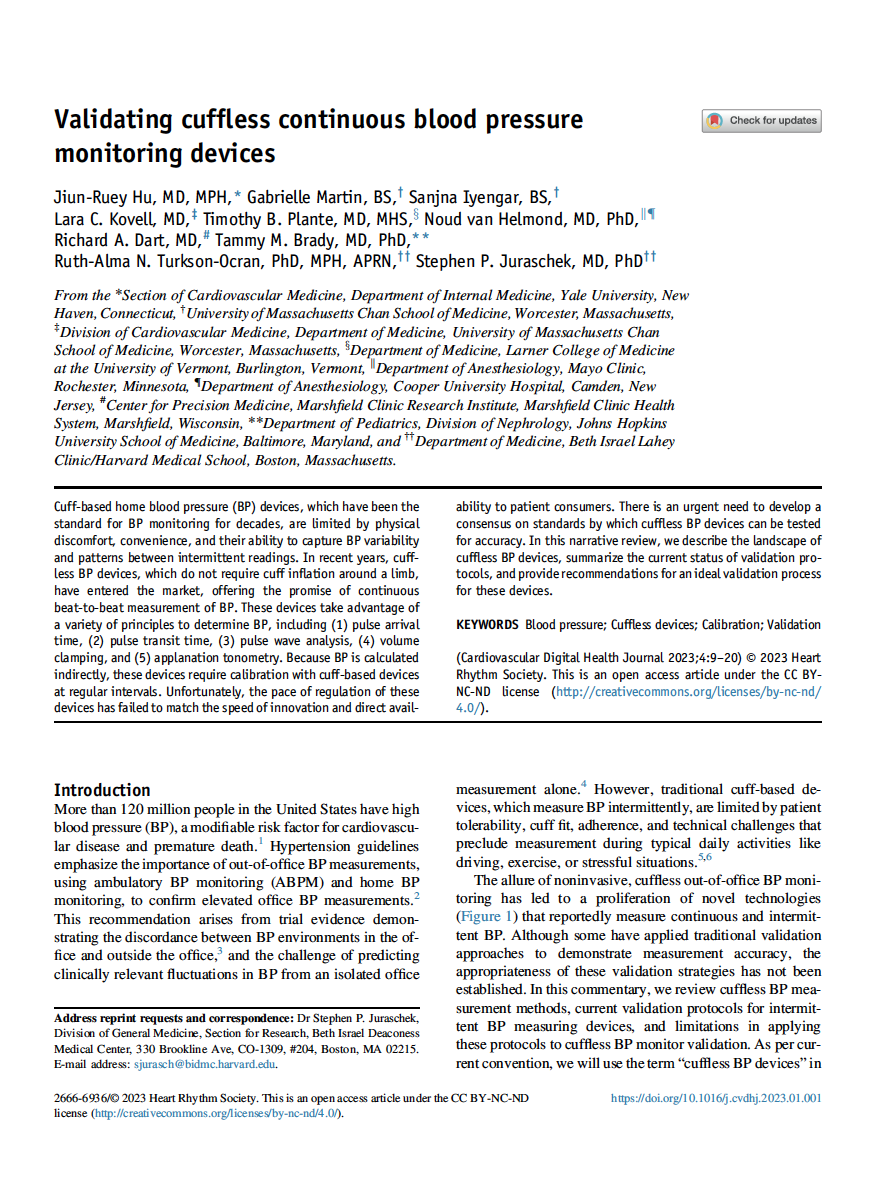📝 Abstract
Abstract: Cuff-based home blood pressure (BP) devices, which have been the standard for BP monitoring for decades, are limited by physical discomfort, convenience, and their ability to capture BP variability and patterns between intermittent readings. In recent years, cuffless BP devices, which do not require cuff inflation around a limb, have entered the market, offering the promise of continuous beat-to-beat measurement of BP. These devices take advantage of a variety of principles to determine BP, including (1) pulse arrival time, (2) pulse transit time, (3) pulse wave analysis, (4) volume clamping, and (5) applanation tonometry. Because BP is calculated indirectly, these devices require calibration with cuff-based devices at regular intervals. Unfortunately, the pace of regulation of these devices has failed to match the speed of innovation and direct availability to patient consumers. There is an urgent need to develop a consensus on standards by which cuffless BP devices can be tested for accuracy. In this narrative review, we describe the landscape of cuffless BP devices, summarize the current status of validation protocols, and provide recommendations for an ideal validation process for these devices.


